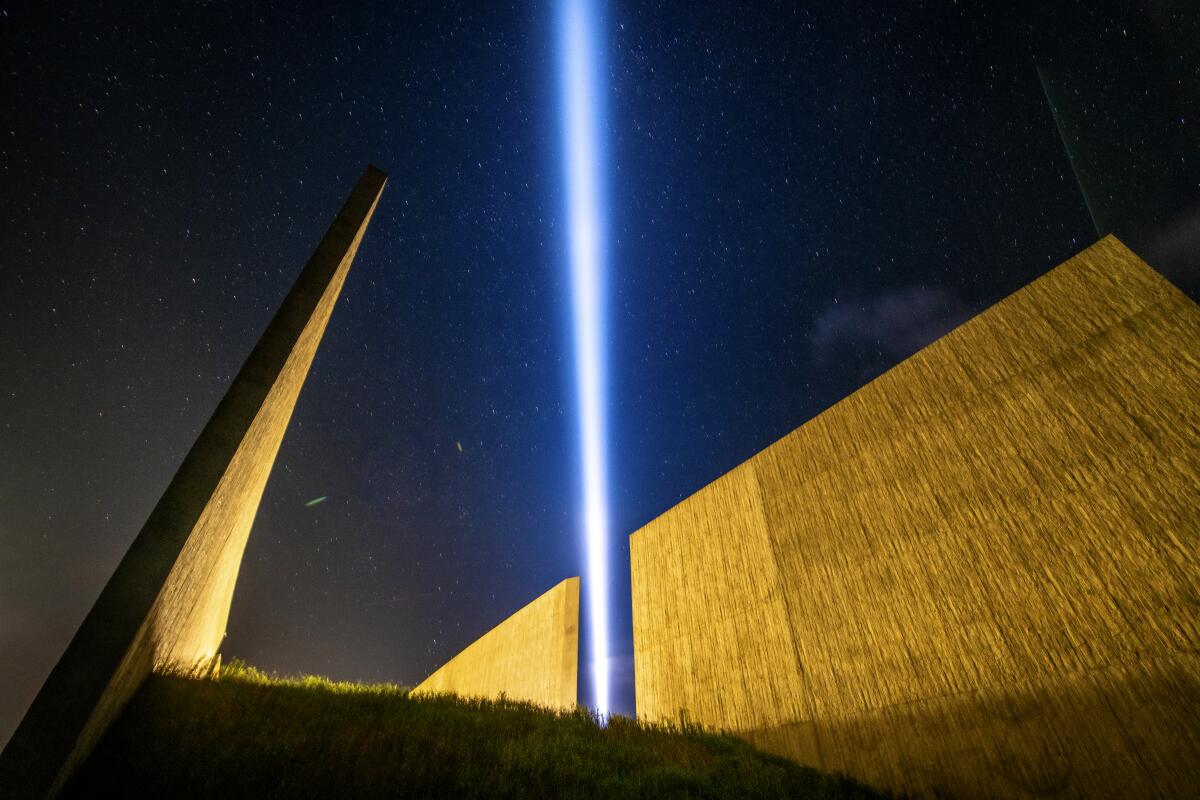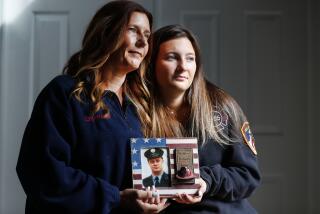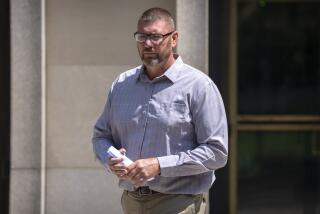Op-Ed: Just imagine if that 4th airliner had hit the Capitol

- Share via
The events of Jan. 6 delivered a profound shock to the American psyche. Government was briefly undone. More than 100 police officers were injured; nine people died in connection to the riot. More than 500 domestic terrorists have been arrested. The price tag for the damage is an estimated $500 million.
For all that, the government quickly rebounded. Vice President Mike Pence escaped the noose; Speaker Nancy Pelosi evaded the mob. Within hours, Pence, Pelosi and the rest of Congress returned to the Capitol to certify the results of a fair election.
The media persists in asserting that Jan. 6 was singular in modern history, and just the second time ever that the U.S. Capitol was attacked. (The first, in 1814, was when British soldiers torched a much smaller building.) But that is only half true.
On Sept. 11, 2001, when the World Trade Center towers fell and the Pentagon was attacked, Al Qaeda terrorists also targeted the seat of government, most likely the U.S. Capitol. The fourth hijacked plane, United Airlines Flight 93, originally bound for San Francisco from Newark, came within minutes of not just interrupting American democracy but eviscerating it.
The story of the valiant revolt of Flight 93’s passengers, ending in its crash in a rural Pennsylvania field, has almost completely obscured how close the Capitol came to total destruction on that day, and how much worse 9/11’s losses could have been.
First, let’s dispense with the popular notion that Flight 93 was aimed at the White House. It’s possible, but most evidence points instead to the Capitol. Two of the plot’s “masterminds” confirmed it in post-9/11 interviews, as does logic.
Flight 93’s terrorist pilot, Ziad Jarrah, struggled in flight school, barely graduating. The plotters would have known he didn’t have the skill or experience to successfully hit as precise a target as the White House — relatively small and tucked among trees and tall buildings, a pinpoint for even a capable pilot flying an airliner at hundreds of miles an hour on a suicide mission. On the other hand, the U.S. Capitol is hard to miss — domed, massive and perched on a hill that Charles L’Enfant, in 1791, called a “pedestal waiting for a monument.”
Jarrah’s weaknesses went deeper than his flying skills. As the seminal 9/11 Commission Report made clear, he was a terrorist in conflict, nearly pulling out of the operation because of a romantic relationship with a Turkish German woman. How his doubts played into the fate of Flight 93 isn’t clear, but cockpit recordings indicate he was far from a cool customer as the passengers tried to retake the plane.
That Jarrah was a less than dedicated terrorist is just one of the accidents of history that played a part in likely saving the Capitol.
Perhaps most importantly, Flight 93 left Newark Airport 25 minutes late, and the hijackers were comparatively slow to take charge of the plane. That gave the passengers and crew, in touch with the outside world via cell and Airfone, about 20 minutes to grasp the 9/11 plot and act against it.
Also by happenstance, Jarrah’s team numbered four members rather than five, as was the case with the other 9/11 flights. Jarrah and one other man took the cockpit, leaving just two “muscle men” threatening the passengers with knives and box cutters.
And there was the amazing and lucky passenger pool, among them a black belt in judo, a brown belt in karate, a national rugby champion, two wrestlers, a weightlifter, a bungee jumper, an all-star field hockey player, a sky diver and an amateur pilot. As the plane turned toward Washington, some among the passengers voted to act.
“I really don’t think people appreciate what could have happened if those heroes had not done what they did,” Alan M. Hantman said in an interview. On Sept. 11, 2001, Hantman was the architect of the Capitol.
It may be understandable that the American public doesn’t appreciate what could have happened: It is almost unimaginable.
Given the many variables involved in crashing an airliner into the Capitol — angle and point of impact, speed, gas load — it would require a supercomputer to calculate likely scenarios and their outcome in death and destruction. (Lawrence Livermore National Laboratory refused my request to conduct such a study.) The Capitol wasn’t then (and isn’t now) a fortress.
Congress was in session on 9/11. Had the Capitol been struck at about the same time as the Pentagon — 9:37 a.m. — tourists, school kids, staffers, senators and representatives would have been at risk. Then House Speaker Dennis Hastert estimated 5,000 people were working in or near the site that day. Priceless artworks would have been lost; the surrounding congressional office buildings and even the close by Supreme Court could have been collateral damage. (My wife, who was at the Library of Congress that morning, could have been a casualty.)
The destruction of the World Trade Center was an attack on the U.S. economy. The gouging of the Pentagon was an insult to American military might. But the leveling of the Capitol would have been the most significant of all. How long it would have taken to restore the levers of government is anyone’s guess. The annihilation of hundreds, if not thousands of elected officials, public servants and citizens, along with the image of a smoldering U.S. Capitol, would have been an indelible blow to the nation.
We rightly honor the heroes of 9/11’s fourth hijacked airliner. Their contribution to our history is incalculable. But we should also hold in our minds the “what ifs” their bravery precluded. Flight 93 was a close call and a signal, one that was amplified on Jan. 6: The American experiment is fragile; it cannot be made perfectly secure.
James Reston Jr. is the author of many books, including most recently, “ The Nineteenth Hijacker: a novel of 9/11.” An expansion of this argument can be found in the September issue of American Heritage.
More to Read
A cure for the common opinion
Get thought-provoking perspectives with our weekly newsletter.
You may occasionally receive promotional content from the Los Angeles Times.










